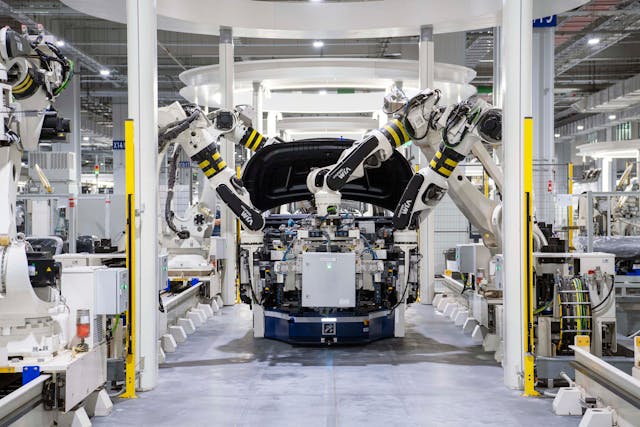Securing AI-Driven Supply Chains for Industry 4.0
As we move through the second half of 2025 I have been looking at Industrial Control System threats in more detail, and what I see is a rapid increase in supply chains being fundamentally transformed by next-generation technologies, artificial intelligence, digital twins, and edge computing. Yet with these advances comes a growing and complex attack surface that extends far beyond the traditional boundaries of IT. Today, the imperative for forward-thinking security architects is to design cohesive architectures that bridge cyber and physical domains, protect critical AI-driven workflows, ensure human safety and enable business resilience at industrial scale.
Why Supply Chain Security is No Longer Just an IT Problem
For most of the past decade, supply chain security has focused on software risk (open source libraries, third-party access, etc.) and digital vendor management. However, the explosion of Industry 4.0 is changing the game:
- AI systems are now making autonomous supply chain decisions in manufacturing, logistics, and warehousing—often in real time.
- IoT sensors and actuators provide a feedback loop between physical operations and digital platforms.
- Digital twins model entire factory floors, shipping routes, or retail inventories—offering tactical advantages but introducing deep dependencies.
These tightly-coupled systems blur the line between cyber and kinetic threats. The attack surface now spans from adversarial attacks on machine learning models to compromise of industrial networks, to the manipulation of smart devices and physical sabotage—all with real-world consequences.
The Modern Threat Landscape: From Data Poisoning to Deepfakes in Logistics
Modern supply chains face attacks on multiple fronts:
- Adversarial ML Attacks: Malicious actors can poison training data or craft inputs that fool AI models used for forecasting, anomaly detection, routing, or quality control.
- Ransomware & OT Disruption: Sophisticated ransomware variants now target both IT and operational technology (OT), shutting down factories or halting shipments for profit.
- IoT Exploits: Weak IoT devices provide both digital beachheads and physical access to facilities.
- Deepfakes & Social Manipulation: AI-generated synthetic data (fake emails, voices, shipment instructions) can be used to redirect or fake transactions, damaging reputations and operations.
- Supply Chain Backdoors: Compromising upstream suppliers or contractors can lead to widespread loss of trust and systemic vulnerabilities.
Architectural Principles for Secure, Integrated Supply Chains
As a security architect, designing for this landscape requires thinking holistically—combining “shift left” IT principles, advanced OT/ICS controls, and robust AI security. Here’s a blueprint:
1. End-to-End Visibility & Segmentation
- Deploy Zero Trust network models that extend from the cloud to the factory floor. Every device, user, and workload must continuously prove its identity and intent.
- Use microsegmentation to isolate OT, IT, and AI assets—limiting blast radius and supporting granular access controls.
- Implement comprehensive asset discovery and visibility tools to map relationships across physical and digital elements.
2. AI/ML Security-By-Design
- Threat model your AI components and digital twins as first-class architecture elements.
- Use adversarial robustness pipelines for AI/ML deployments (including continuous red-teaming of models and data integrity checks).
- Secure the full ML lifecycle: data ingestion, model development, deployment, and operation. Embed explainability and monitoring for AI-driven decisions.
3. Holistic Supply Chain Threat Modelling
- Extend threat models to consider supplier risk, third-party data flows, and “weak links” in logistics or production.
- Include scenarios such as hardware compromises, ML model theft, deepfake manipulation, physical sabotage, and cloud misconfiguration.
4. Automated & Resilient Response Playbooks
- Develop incident response plans that unite cyber, physical, and business teams—speed is critical when a single breakage can halt global shipments.
- Automate response wherever possible (e.g., quarantining compromised IoT, rapidly patching AI models, instant notifications to business stakeholders).
- Regularly exercise “tabletop” simulations that include both digital and kinetic incident scenarios.
5. OT/IoT Security Best Practices
- Harden devices with strong authentication, encryption, and minimal services.
- Practice network separation for critical control systems and keep maintenance interfaces isolated.
- Monitor for unusual physical activity or cyber-physical anomalies, leveraging AI/ML for detection.
- Where old equipment can’t meet modern security requirements, plan replacement or secure enclaves to protect those devices. I have worked with organisations where a simply ping to a particilar port would bring down a ICS device or cause it to failover in a never ending loop impacting the business, a simple firewall rule and VLAN would have prevented the outage.
Lessons Learned
Recent high-profile attacks provide us with some insight into the real world impact for these types of attacks:
The 2024 logistics ransomware incident that brought a major European port to a standstill—through manipulation of AI-powered routing and asset management systems.
The 2025 food supply chain attack where adversaries used spear-phishing and deepfakes to redirect shipments, exposing the weaknesses in both digital and human processes.
The global recall triggered by a compromised IoT sensor in pharmaceuticals, illustrating risk at the intersection of digital code and physical products.
Building the Future-Proof Supply Chain
How do we approach this, well here are my thoughts:
Identify & classify all interconnections—from warehouse robots to SaaS dashboards to partner data feeds, understanding and maintaining good quality documentation is key.
Mandate continuous threat intelligence feeds that cover cyber, OT, and AI-specific threats, don’t just blindly take the intelligence but understand the impact to your organization, where you use the technology that is under threat and the potential business impact.
Demand supply chain transparency from all vendors—including software bills of materials (SBOMs), AI model documentation, and robust compliance evidence. SBOMs are increasingly critical, dependencies from neglected repositories are becoming a more common problem, normal software can suddenly be weapnised and become malicious. The initial risk assesment when onboarding the software normally doesn’t cover analysis for updates.
Invest in security culture and cross-domain expertise—bridge the gap between security, operations, and data science teams. Implement Security Champions in your teams, not just in security. One client I work with does this so well with cross business and IT teams getting together for a monthly security day to share information across all teams, in addition to regular updates all other times.
The future of secure supply chains is neither purely cyber nor physical—it exists at their intersection. Modern security architecture must reflect this fusion, anticipating threats, building in intelligence, and enabling agile, business-driven response.

